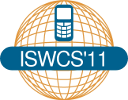Keynotes
Compressive Identification of Linear Operators
Helmut Bölcskei - ETH Zurich, SwitzerlandWe consider the problem of identifying a linear deterministic operator from an input-output measurement. For the large class of continuous (and hence bounded) operators, under additional mild restrictions, we show that stable identifiability is possible if the total support area of the operator's spreading function satisfies Δ ≤ ½. This result holds for arbitrary (possibly fragmented) support regions of the spreading function, does not impose limitations on the total extent of the support region, and, most importantly, does not require the support region of the spreading function to be known prior to identification. Furthermore, we prove that asking for identifiability of only almost all operators, stable identifiability is possible if Δ ≤ 1. This result is surprising as it says that there is no penalty for not knowing the support region of the spreading function prior to identification.
Download presentation as PDF
The Future of Mobile Communications from an operator's practical point of view
Hartmut Kremling - Vodafone, GermanyMobile telecommunication for the general public is a young market since starting GSM networks in the early 90s. In its short history network capabilities have been always the key assets of mobile operators. To own enough frequency spectrums is an important factor for a mobile network operator. Since 4-5 years we see big changes in the telco environment with no end in sight. The market is changing with new market players like Google or Apple entering, with new internet service s going mobile or with new mobile devices replacing old-fashioned mobile phones. Seeing this trend mobile operators have to decide how to act, becoming a so called 'smart bit pipe' with offering additional services for customers with additional revenue potential or staying as before with selling pure network connectivity.
Download presentation as PDF
Physical Layer Security in Wireless Networks
H. Vincent Poor - Princeton University, USASecurity in wireless networks has traditionally been considered to be an issue to be addressed at the higher layers of the network. However, with the emergence of ad hoc and other less centralized networking architectures, and networks having low-complexity nodes, there has been an increase in interest in the potential of the wireless physical layer to provide communications security. Information theory provides a natural framework for the study of this issue, and consequently there has been a resurgence of interest in information-theoretic security in recent years, particularly for wireless channel models. The use of information theoretic concepts to characterize communications security dates to Shannon's earliest work, and the important work on the wire-tap channel by Wyner and by Csiszár and Körner in the 1970's addressed security issues for broadcast communications. But, recent work has taken these early ideas and expanded on them considerably, by examining multiple-access channels, fading, code design for secure transmission, feedback, authentication, secure network coding, and many other issues. This talk will review recent work and open issues in this field. Further recent work using a similar formalism to examine the tradeoff between privacy and utility of data sources will also be touched upon briefly.
Download presentation as PDF
Compressed Sensing - beyond the Shannon Paradigm
Wolfgang Dahmen - RWTH Aachen University, GermanyThe usual paradigm for signal processing is to model a signal as a bandlimited function and capture it by means of its temporal or spatial samples. The Shannon-Nyquist theory says that the sampling rate needs to be at least twice the bandwidth. For broadbanded signals like digital images, such high sampling rates may be impossible to implement in circuitry. Compressed Sensing is a new paradigm in signal processing whose aim is to circumvent this dilemma by sampling signals closer to their information rate instead of their bandwidth while retaining high recovery quality. It is therefore of particular interest in those applications where measurements are expensive or difficult to acquire. More precisely, rather than model the signal as bandlimited, Compressed Sensing assumes that the signal is sparse in that it can be represented or approximated by a few suitably chosen terms from some basis expansion of the signal. It also enlarges the concept of sample to include the application of more general linear functional applied to the signal.
We give a brief introduction to Compressed Sensing that centers on the effectiveness and implementation of random sampling. As a central theme, we formulate the notion of instance optimality as a performance benchmark that applies also to non-sparse signals. The subsequent discussion of this performance benchmark touches on the relevant conceptual background relating to Banach space geometry, dimension reduction and random matrices. Moreover, instance optimal decoding techniques are sketched. If time permits, we close with some remarks on emerging applications e.g. related to electron microscopy.
Download presentation as PDF
Mechanism Design and Sale of Wireless Spectrum
Bruce Hajek - University of Illinois, Urbana-Champaign, USAThis talk will focus on theory and practice of combinatorial auctions and their application to the sale of wireless spectrum licenses. As new wireless applications emerge worldwide, the wireless industry and government regulators are looking to reallocate wireless spectrum to better match the demand. Combinatorial auctions can play an effective role in the allocation process, but important implementation issues remain.
Download presentation as PDF











